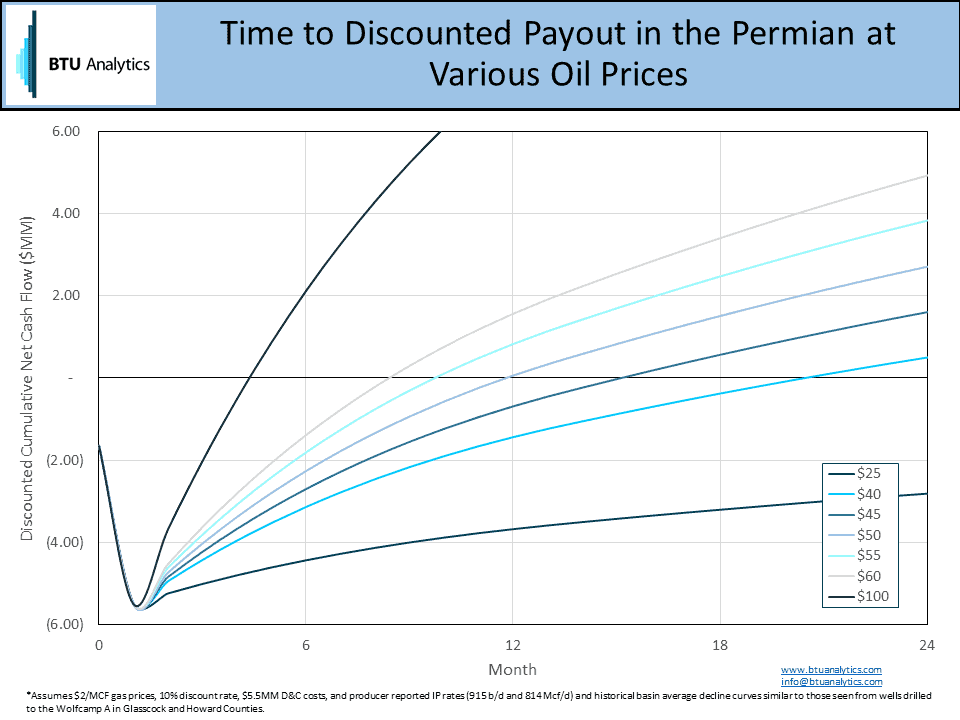The Permian Basin has received the lion’s share of new drilling activity from US E&P companies as WTI has begun to recover from its lowest price since 2003. However, as recent months have shown, volatility is still the market watchword. A factor contributing to this volatility is uncertainty around what price will bring back real gains in activity, and what price will bring too much activity back to the field, pushing the global crude market back to oversupply? While analysis on this topic is highlighted regularly in our commentary, today’s feature focuses on how quickly an investment in one of the industries’ hottest areas can be recovered.

While the recent price crash has highlighted the risk of unchecked lending to shale drillers, shale wells remain attractive in part because North American shale resources remain vast and capital remains relatively cheap. While producers tout that money can be made at lower oil prices than in the past, how should we think about the amount of time it takes to recoup an investment? Focusing on the time to discounted payout (the point at which the income from a well, discounted for cost of capital, pays off the original investment in that well) can give us a feel for at what point wells start generating profits which can be reinvested into subsequent wells.
But where do prices need to be for wells in the Permian to recover their capital in a timely manner?
With today’s drilling and completion (D&C) costs, $100/bbl prices would allow a horizontal Wolfcamp well to reach discounted payback in just under six months (IRR of 1058%). With prices at $25/bbl, wells would not reach discounted payback for 11.5 years (IRR of 3.57%). In a price range more relevant to today, discounted payback can be achieved in 21 months with prices at $40/bbl (IRR of 51.4%), 12 months at $50/bbl (IRR of 109.4%), and 9 months at $60/bbl (IRR of 195.1%).
Despite the recent, tentative increase in drilling activity, there continues to be risks to returning to the field. For more data and insight on BTU’s views on the recovery, request a copy of our Upstream Outlook.








